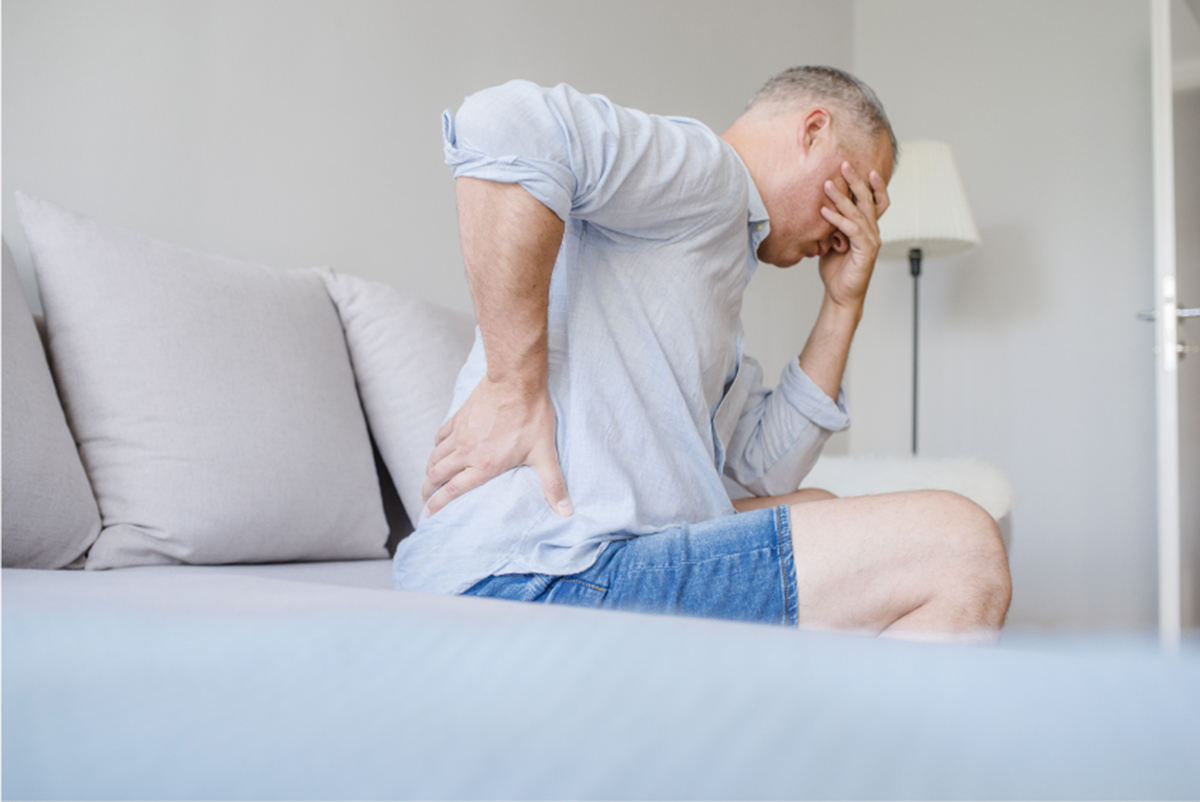While symptoms like tremors, rigidity, slowness of movement, and even depression and dementia are well-known to be associated with Parkinson's, pain isn't one of the symptoms that immediately comes to mind. When you're suffering, it's up to your doctor to figure out whether your pain is caused by Parkinson's disease or another condition you may also have developed.
What kinds of pain might Parkinson's disease patients encounter?
Researchers have identified five kinds of pain that people with Parkinson's disease may suffer from.
Musculoskeletal pain is the first and most common of these. You may experience aches, pains, tenderness, and soreness in muscles and joints that get worse as your posture deteriorates and your stiffness progresses. The extent of your pain is likely to shift depending on what medications you take, and the commonly prescribed Parkinson's medication levodopa often makes it better. Moving more can help too.
Dystonic pain, meanwhile, is is the second most common kind of pain Parkinson's disease patients experience. It is linked to involuntary muscle movements. This kind of pain may be worse in the morning and can depend on the dosage of your medications. Neuropathic pain, pain caused by damage or disease within the nervous system, can also impact Parkinson's sufferers. Another kind of pain called central or primary pain can induce burning or tingling feelings, and is associated with changes within the central nervous system. Parkinson's patients may further experience headaches, arthritic pain, back aches, pain in the mouth, and pain in the genital region.

More concretely, people with Parkinson's disease have been found to be more likely to fall victim to:
- Back pain — research suggests that the vast majority of Parkinson's disease patients suffer from back pain.
- Abdominal pain — linked to difficulties with swallowing and constipation.
- Shoulder pain is also more common in people with Parkinson's, though research into the prevalence has led to varied results. In some cases, shoulder pain is the very first noticeable symptom a patient will experience.
What kinds of treatments may be advised if your pain is found to be related to your Parkinson's disease?
1. Medications that help treat your Parkinson's disease-related pain
- Levodopa and dopamine agonists are both medications that frequently prescribed to Parkinson's disease patients to help them manage the motor symptoms that are so characteristic of the disease — but they can also play a role in reducing your pain.
- NSAIDs — nonsteroidal anti-inflammatory drugs — include ibuprofen (Advil, Motrin), naproxen (Aleve), and even Aspirin. Many of them are available over the counter, and they're the drugs we're most likely to turn to when we're experiencing pain. An interesting bit of information is that, although NSAIDs do have potential adverse affect, their long-term use appears to decrease a person's risk of developing Parkinson's disease in the first place.
- Botox — dystonia, or involuntary muscle movement, is one of the features of Parkinson's disease that can lead patients to experience pain. Injections of botulinum toxin, popularly called Botox, have been shown to be effective at treating dystonia within the legs.
2. Deep Brain Stimulation
Deep brain stimulation, the nifty Parkinson's disease surgery in which a neurostimulator is implanted into the brain to ease tremor, rigidity, slowed movement, and balance problems, can reduce pain as well. One study showed that people with dystonic and musculoskeletal pain especially benefited from deep brain stimulation. While the procedure doesn't seem to help with central and neuropathic pain, there is good news. Seventy percent of patients, research indicates, suffered from Parkinson's-related pain prior to deep brain stimulation, compared to a much lower 21 percent after the operation.
3. Massage
Massage is one of the oldest forms of therapy around, and research shows that it can help Parkinson's disease patients by temporarily reducing rigidity, decreasing the intensity and frequency of resting and postural tremors, and boosting overall wellbeing. Massage has also been studied in the context of many chronic pain disorders, and has consistently been demonstrated to have benefits — likely due to a combination of physical and psychological effects.
4. Acupuncture
Acupuncture, an ancient Asian discipline, again benefits people who suffer from chronic pain resulting from many different causes. While it is considered a form of alternative medicine in the west, data from China and Korea further demonstrates that acupuncture has a significant positive effect on other symptoms of Parkinson's disease as well.
5. Tai Chi and yoga
Tai Chi and yoga are two disciplines that offer both physical and mental benefits. By countering your rigidity, helping you maintain and even increase your flexibility, and working on your stamina, yoga and Tai Chi can help you combat musculoskeletal pain. Because they also teach breathing and meditation, however, these disciplines can also alter the way in which you approach your discomfort, making it easier to get through. Yoga or Tai Chi classes specifically geared towards folks with Parkinson's disease are even available in some places.
6. Music therapy
While we all intuitively feel that music can have an extremely positive effect on our moods, research even shows that listening to music regularly reduces pain levels enough to make us less dependent on pharmacological pain relievers! If you're also suffering from depression or disordered sleep, it appears that gentle, slow, music is best for you.
- Photo courtesy of SteadyHealth.com
- www.ncbi.nlm.nih.gov/pmc/articles/PMC4550419/
- www.ncbi.nlm.nih.gov/pmc/articles/PMC5053370/
- www.ncbi.nlm.nih.gov/pubmed/28243753
- www.ncbi.nlm.nih.gov/pubmed/28805585
- www.ncbi.nlm.nih.gov/pubmed/23055368
- www.researchgate.net/publication/265602440_Effects_of_deep_brain_stimulation_on_pain_and_other_nonmotor_symptoms_in_Parkinson_disease
- www.ncbi.nlm.nih.gov/pmc/articles/PMC4771486/
- www.ncbi.nlm.nih.gov/pmc/articles/PMC5279085/


Your thoughts on this